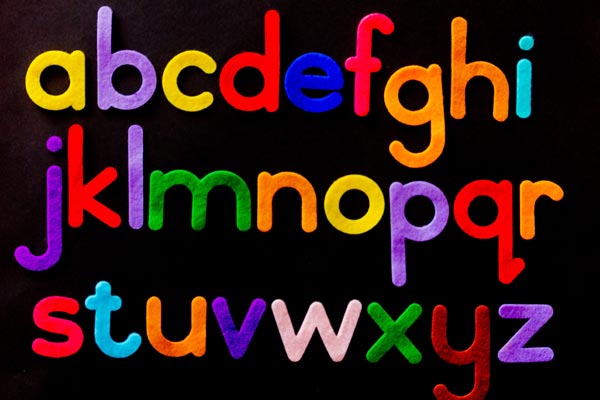Module 1 My classmates
【重点短语】
1.be from... =come from... 来自......
2....years old ......岁
3.what about... =how about... ......怎么样?
4.in Class Ten, Grade Seven 在七年级十班
5.the capital of... ...... 的首都/省会
6.first name =given name 名
7.last name=family name 姓
8.English name 英文名字
9.Chinese name 中文名字
【重点句子】
1.I’m Chinese ,and I’m fromChina. 我是中国人, 我来自中国
(I’m Chinese, and I come fromChina.)
2. Where are they from? 他们来自什么哪里?
(=Wheredo they come from?)
They are from America. 他们来自美国.
(=Theycome fromAmerica.)
3.How old is that man? 那位男子多少岁了?
He isforty-four. 他44岁
4. The students are in Class Five, Grade Seven.
这些学生在七年级五班
5. Tom is in Class One with Lingling. 汤姆和玲玲在一班。
=Tom with Lingling is in ClassOne.
=Tom and Lingling are in Class One.
6.What about you?=How about you?=And you?你呢?/你怎么样?
7.Welcome to Class 6 Grade 7 ! 欢迎到七年级六班。
8. Beijing is the capital ofChina. 北京是中国的首都。
9.Good to see you.
=Nice to see you.=Glad to seeyou. 很高兴见到你。
10.I’m Tony Smith.Tony is my first name and Smith is my last name. 我是Tony Smith,Tony是我的名,Smith是我的姓。
11.What about going swimming? 去游泳怎么样?
Good idea! / Sounds great!/ Great!
12. Everyone is here. 每个人都在这里。
【语法知识】
be动词的用法
1. “be”的变化形式
当主语是“I”(我)时,be动词用“am”。
例句:I am a student. 我是一个学生。
当主语是“you”(你/你们)时,be动词用“are”。
例句:You are my friends. 你们是我的朋友。
当主语是“he”(他)、“she”(她)或“it”(它)时,be动词用“is”。
例句:He is tall. 他很高。
记忆口诀:I用am,you用are,is用于he,she,it。
2. 单复数与“be”动词的搭配
除了人称代词,我们还要注意名词的单复数。单数名词或不可数名词前面用“is”,复数名词前面用“are”。
例句:
The cat is sleeping. 猫正在睡觉。
The books are on the desk. 书在桌子上。
3. “be”动词的否定形式
想要表达否定意思时,我们只需在“动词”后面加上“not”,即主语+be + not。
例句:
I am not happy. 我不开心。
4. “be”的缩写
I am = I’m 我是
you are = you’re 你是/你们是
he is = he’s 他是
she is = she’s 她是
it is = it’s 它是
what is = what’s 什么是
5. “be”的疑问句
用“Be”构成的疑问句很简单,只需把“Be”提前,后面跟上主语和其他部分,即is/am/are +主语+ 其他?。
例句:
Are you ready? 你准备好了吗?
肯定回答:Yes, 主语+be.
否定回答:No, 主语+be not. 注意,这里“be not”可以缩写为“aren’t”、“isn’t”等。
例句:
Are you Lily?(你莉莉吗?)
Yes, I am. 是的,我是。/ No, I'm not. 不,我不是。
“and”与“but”的用法
and:和,表示并列或顺承关系
“and”是一个非常常见的连词,它主要用于连接两个或多个并列的词语、短语或句子,表示它们之间存在并列或顺承的关系。就像我们中文里说的“和”,把两个相似或相关的事物放在一起。
例句:
I like apples and oranges. 我喜欢苹果和橙子。
这里,“and”连接了两个水果名词,表示我都喜欢它们。
First, I got up, and then I had breakfast. 首先,我起床了,然后我吃早餐。
在这个句子中,“and”连接了两个顺序发生的动作,表示先起床再吃早餐。
but:但是,表示转折关系
“but”则是一个表示转折关系的连词。它用于连接两个意思相反或相对的词语、短语或句子,突出前后两部分之间的对比或差异。就像我们中文里说的“但是”,用来表达一种转折或对立的关系。
例句:
I want to go out, but it's raining. 我想出去玩,但是下雨了。
这里,“but”连接了两个相反的情况:我想出去玩(期望),但下雨了(现实)。
You can have ice cream, but not too much. 你可以吃冰淇淋,但是不要吃太多。
虽然这里没有直接说出“不能吃太多”,但“but”已经隐含了与前半句“可以吃”的转折关系,告诉我们要注意适量。






